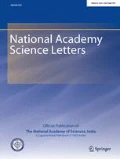Abstract
Designing the interphase region in conventional fiber-reinforced plastics is an efficient strategy to enhance their interfacial and interlaminar properties. The influence of the interphase region on stress concentration surrounding the fiber is systematically studied using finite element (FE) simulations in fuzzy fiber-reinforced composites. Two-phase (fiber/matrix) and three-phase (fiber/interphase/matrix) numerical models are used in FE simulation for comparative analysis. While the matrix is taken as isotropic material, both isotropic and transversely isotropic fibers are considered in numerical simulations. Two types of interphase regions: (1) interphase having a constant modulus and (2) graded interphase with varying modulus across the thickness are studied. The predictions from FE simulations are validated with the analytical results obtained from the rule of mixtures approach. FE simulations show that the presence of interphase increases the stiffness of the representative volume element (RVE) and reduces the stress concentration around the fiber. Moreover, the graded interphase is more effective in reducing the stress jump at the fiber/matrix interface in comparison with the interphase having a constant modulus.



References
Wicks SS, de Villoria RG, Wardle BL (2010) Interlaminar and intralaminar reinforcement of composite laminates with aligned carbon nanotubes. Compos Sci Technol 70:20–28
Coleman JN, Khan U, Blau WJ, Gun’ko YK (2006) Small but strong: a review of the mechanical properties of carbon nanotube–polymer composites. Carbon 44:1624–1652
Yuan X, Zhu B, Cai X et al (2018) Influence of different surface treatments on the interfacial adhesion of graphene oxide/carbon fiber/epoxy composites. Appl Surf Sci 458:996–1005
Sreenivasulu B, Ramji B, Nagaral M (2018) A review on graphene reinforced polymer matrix composites. Mater Today Proc 5:2419–2428
Bedi HS, Agnihotri PK (2020) Interface and interphase in carbon nanotube-based polymer composites: a review. In: Mavinkere Rangappa S, Parameswaranpillai J, Siengchin S, Thomas S (eds) Handbook of epoxy/fiber composites. Springer, Singapore, pp 1–22
Feng L, Li K-Z, Lu J-H, Qi L-H (2017) Effect of growth temperature on carbon nanotube grafting morphology and mechanical behavior of carbon fibers and carbon/carbon composites. J Mater Sci Technol 33:65–70
Tiwari M, Billing BK, Bedi HS, Agnihotri PK (2020) Quantification of carbon nanotube dispersion and its correlation with mechanical and thermal properties of epoxy nanocomposites. J Appl Polym Sci 137:48879
Sharma S, Lakkad S (2011) Effect of CNTs growth on carbon fibers on the tensile strength of CNTs grown carbon fiber-reinforced polymer matrix composites. Compos Part A 42:8–15
Khan SU, Kim J-K (2011) Impact and delamination failure of multiscale carbon nanotube-fiber reinforced polymer composites: a review. Int J Aeronaut Space Sci 12:115–133
Khan S, Bedi HS, Agnihotri PK (2018) Augmenting mode-II fracture toughness of carbon fiber/epoxy composites through carbon nanotube grafting. Eng Fract Mech 204:211–220
Bedi HS, Billing BK, Agnihotri PK (2020) Interphase engineering in carbon fiber/epoxy composites: rate sensitivity of interfacial shear strength and interfacial fracture toughness. Polym Compos 41:2803–2815
Bedi HS, Padhee SS, Agnihotri PK (2018) Effect of carbon nanotube grafting on the wettability and average mechanical properties of carbon fiber/polymer multiscale composites. Polym Compos 39:E1184–E1195
Rafiee R, Ghorbanhosseini A (2018) Predicting mechanical properties of fuzzy fiber reinforced composites: radially grown carbon nanotubes on the carbon fiber. Int J Mech Mater Des 14:37–50
Cheng Y, Zhang K, Liang B et al (2019) Micromechanics of CNT grafted FRP based on hierarchical homogenization of transversely isotropic multi-coated model. Int J Mech Sci 161:105014
Kanit T, Forest S, Galliet I, Mounoury V, Jeulin D (2003) Determination of the size of the representative volume element for random composites: statistical and numerical approach. Int J Solids Struct 40:3647–3679
El Moumen A, Tarfaoui M, Lafdi K (2018) Computational homogenization of mechanical properties for laminate composites reinforced with thin film made of carbon nanotubes. Appl Compos Mater 25:569–588
Gupta A, Harsha S (2016) Analysis of mechanical properties of carbon nanotube reinforced polymer composites using multi-scale finite element modeling approach. Compos Part B 95:172–178
Bedi HS, Tiwari M, Agnihotri PK (2018) Quantitative determination of size and properties of interphase in carbon nanotube-based multiscale composites. Carbon 132:181–190
Withers G, Yu Y, Khabashesku V et al (2015) Improved mechanical properties of an epoxy glass–fiber composite reinforced with surface organomodified nanoclays. Compos Part B 72:175–182
Singh TJ, Samanta S (2015) Characterization of Kevlar fiber and its composites: a review. Mater Today Proc 2:1381–1387
Eshelby JD (1959) The elastic field outside an ellipsoidal inclusion. Proc R Soc Lond Ser A Math Phys Sci 252:561–569
Romanov VS, Lomov SV, Verpoest I, Gorbatikh L (2014) Can carbon nanotubes grown on fibers fundamentally change stress distribution in a composite? Compos Part A 63:32–34
Acknowledgements
The authors would like to thank Indian Institute of Technology Ropar for the research facilities.
Author information
Authors and Affiliations
Corresponding author
Ethics declarations
Conflict of interest
The authors declare no conflicts of interest.
Additional information
Publisher's Note
Springer Nature remains neutral with regard to jurisdictional claims in published maps and institutional affiliations.
Rights and permissions
About this article
Cite this article
Kaushik, D., Saikia, M., Bedi, H.S. et al. Effect of Fiber Anisotropy and Interphase on the Stress Jumps Across the Fiber/Matrix Interface in Fuzzy Fiber Composites. Natl. Acad. Sci. Lett. 46, 165–171 (2023). https://doi.org/10.1007/s40009-023-01211-4
Published:
Issue Date:
DOI: https://doi.org/10.1007/s40009-023-01211-4

